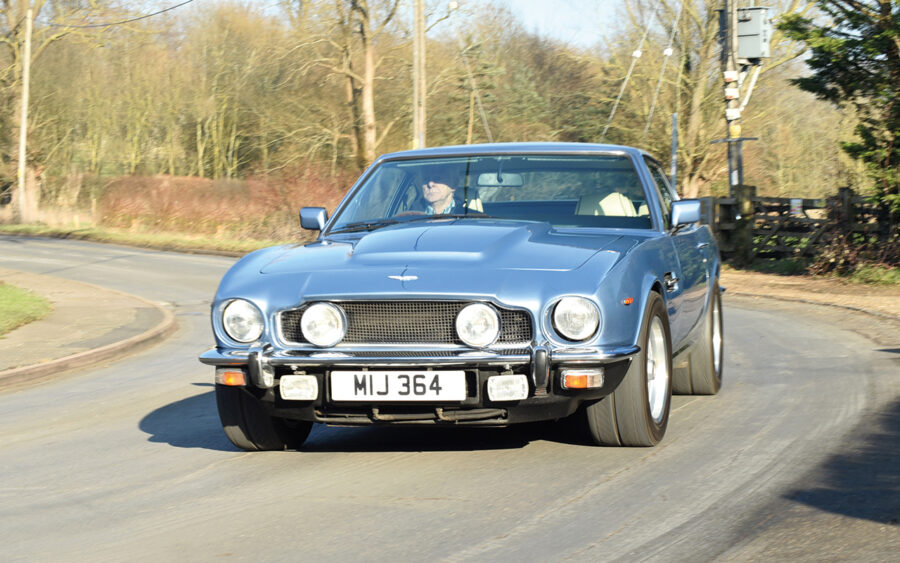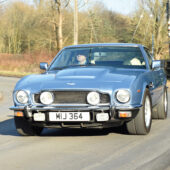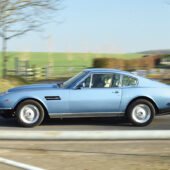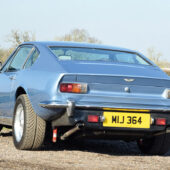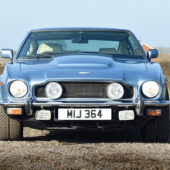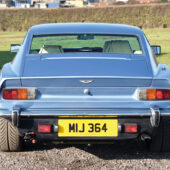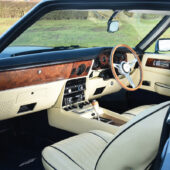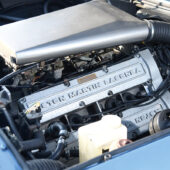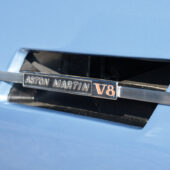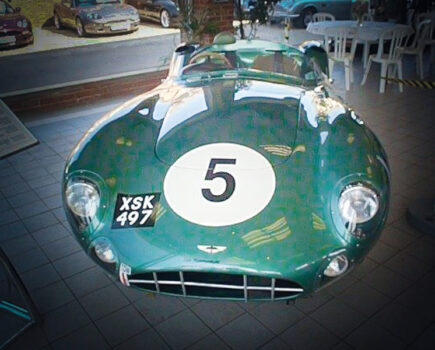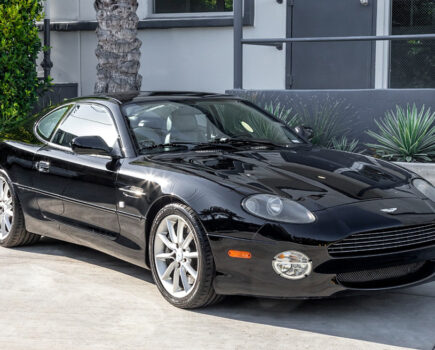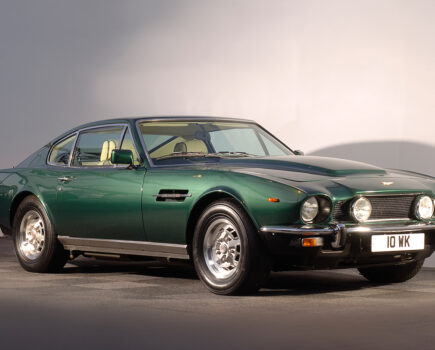Although the name was unusual, the improvements made to the AMV8 in 1978 that resulted in the Oscar India were not. We get behind the wheel and explore its history
Words and images: Paul Walton
The term ‘Oscar India’ might sound like a codename Richard Burton would have used during a 1970s war film, but for those in the know, it relates to a specific model in the long history of the Aston Martin AMV8. Although an unofficial designation, the updates behind it resulted in arguably the best version of the model so far and certainly the most luxurious.
As Motor magazine said in its 3 March 1979 issue, “Few can match the finish of this fine example of British craftsmanship.” And 45 years since the unusually named V8 Oscar India made its debut, that’s still the case.
Following Aston Martin’s bankruptcy in 1974 and subsequent rescue two years later, by the late Seventies its sole product, the AMV8 was suffering from a lack of investment. As a development of the DBS that had originally debuted in 1967, the car was clearly old-fashioned, especially compared to newer four-seat GT rivals such as the BMW 6-Series, Ferrari 400i and Jaguar XJ-S.
Coming a year after the introduction of the higher-powered Vantage model, in 1978 the car received its most significant and important facelift to date. In conjunction with the DBS’s original designer, William Towns, the exterior was given a slight makeover which consisted of a rear boot spoiler similar to that of the Vantage, while the bonnet intake was closed resulting in a discreet power bulge.
The new V8 Volante from June 1978 had been the first Aston Martin since the DB2/4 of the 1950s to feature an interior of burr walnut and as part of its facelift, the coupe followed suit. Other changes included a hide rather than a cloth headlining, restyled headrests, a new centre console with a cigarette lighter for rear passengers plus improved air-conditioning. Compared to the monotone black vinyl of the DBS and early V8 models, this was the interior the critics had been waiting for.
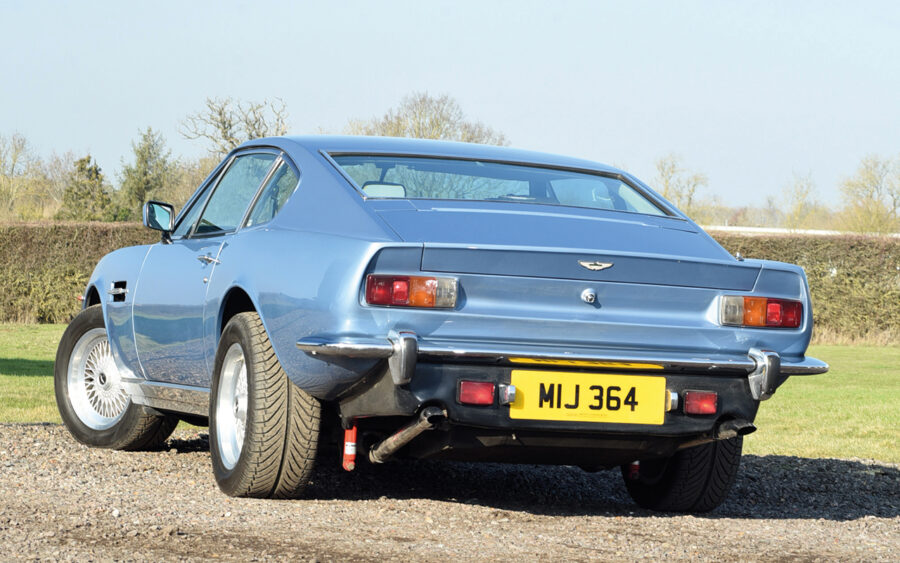
“Although traditional almost to the point of being old-fashioned,” continued Motor in its March 1979 issue, “we found the interior’s combination of polished walnut, beige Connolly hide and deep pile carpet to be quite exquisite and assembled to a standard fully in keeping with the quality of the materials used.”
The modifications might have been minor and didn’t include any changes to the current generation of Aston’s 5.3-litre V8 engine (the V540), but together they helped keep the clearly ageing model credible for the approaching new decade.
Yet when this update made its debut at the 1978 British Motor Show, it didn’t have an official name. The factory, though, did have one for the car and the most common theory is that it came from Aston Martin’s then chairman, Alan Curtis’s love of all things aviation, plus the date for its introduction. When using the NATO phonetic alphabet, ‘October introduction’ becomes ‘Oscar India.’
But Aston Martin’s then director of engineering, Mike Loasby, says the name had another source. “Oscar India was so called so that we could refer to it amongst ourselves at Aston Martin without anybody knowing what it was called,” he said in David Dowsey’s 2007 book, Aston Martin: Power, Beauty and Soul. “The registration letters of the Cessna 152 aeroplane that Alan Curtis used to fly up from Blackbush to Cranfield were Golf, Bravo, Foxtrot, Oscar India (G-BFOI). We called the car ‘Oscar India’ because people would think that we were referring to the aircraft. It didn’t stand for October introduction, not in my book it didn’t.”
Whether it was either of these or a mixture of the two, the term has come to define this era of Aston Martin AMV8 although it’s also now known by the less exotic-sounding Series 4.
In June 1980 the V540-generation of V8 was replaced by the V580 that featured the same cylinder head as the Lagonda Series 2. There was also larger and Tuftrided (hardened) dished valves, polynomial camshaft profiles, the same smaller cylinder porting as the Vantage and barrel-shaped pistons while the compression ratio was increased to 9.3:1. Although power remained roughly the same, mid-range torque was improved.
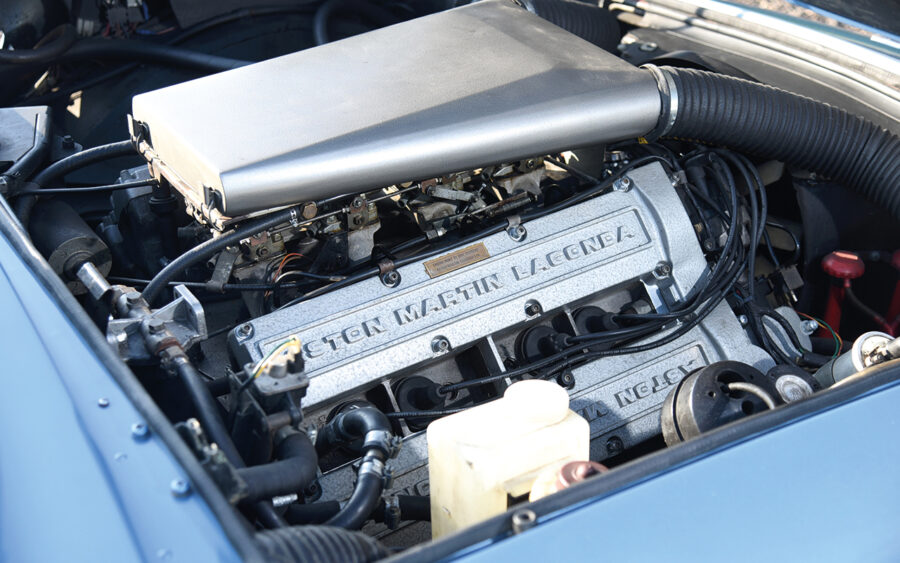
“The Aston Martin engine doesn’t feel tame, nor sound quiet,” said Performance Car magazine in its March 1985 test of the company’s 10,000 car, a standard AMV8 in Oscar India spec. “In full throttle there is a surge of induction noise, quiet enough to drown a normally-set radio, even though it settles down to a dull mumble in high-speed cruising.”
Around the same time as the V580, gas struts for the bonnet, interior switches for the petrol filler cap, electrically adjusted wing mirrors and central locking for both doors were also introduced.
The only other update of significance came in 1983 when the GKN wheels Aston had been using since the early Seventies were swapped for 15in BBS alloys with a lattice design that was popular at the time.
This Winchester Blue saloon from 1984 is a perfect example of a late V8 Oscar India. Fitted (as most were) with the optional Cibie driving lights in the radiator grille, the big, burly design is both muscular yet handsome, its lines slightly softened over time compared to Towns’ original, harder edged DBS while the tail spoiler gives it a more aggressive look especially from the rear. It’s worth noting the original BBS alloys have been replaced by similar-looking Ronals that were usually fitted to later Vantages powered by the higher performance X-Pack engine.
There could have been no denying even when the Oscar India revision was first revealed 45 years ago it was an old-fashioned car. The upshot, though, is that it hasn’t aged or dated as much as some of its more modern, fashion-lead contemporaries of the time such as the square-edged Ferrari Testarossa or the over-the-top Porsche 959.
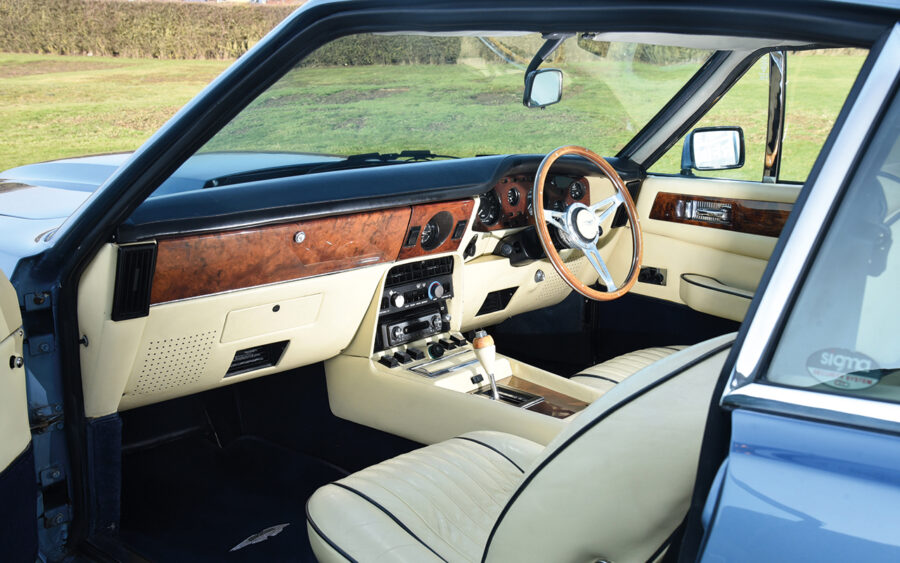
The door unlatches with the familiar positive, mechanical click only Aston Martins of this vintage offer and I sink into the soft, sweetly perfumed Connolly leather. Although on first glance the traditional dash of white on black dials, acres of veneer and a slightly chaotic layout is similar in style to that other great British GT of the time, the Jaguar XJ-S, but by being clearly handmade by men in brown coats rather than on a production line, it’s like comparing a Savile Row suit with an off-the-peg M&S two-piece. Apparently it took nine hides to complete the interior which doesn’t surprise me since there’s leather everywhere. I’m a little disappointed when I discover it doesn’t continue inside the slim glovebox.
The big V8 churns lazily over a couple of times before firing, the engine sounding surprisingly quiet for such a big brute. Don’t be fooled though; this delusion soon comes to an end when I squeeze the throttle hard for the first time and the interior is filled with a deep baritone cacophony of noise.
Aston Martin was always reluctant to reveal power figures but Performance Car’s 1985 test reckoned 306bhp. A reasonably healthy figure for the time (Jaguar’s 5.3 V12 had 15bhp less), even today the big V8 needs effort deliver its seemingly never-ending levels of beefy, raw power.
Yet there’s no denying the unit also lacks the smoothness of Jaguar’s magnificent V12 and I can always feel the V8 throb and vibrate. Although this means the car lacks the refinement of an XJ-S, it also gives the big Aston a unique, unforgettable, and unharnessed character.
This car, like all but 13 non-Vantage V8 Oscar Indias, is fitted with the Chrysler three-speed automatic gearbox. The reason for the difference was money; the American-sourced transmission cost AML £150 while the five-speed manual from German firm ZF was ten times that. Slow, dim-witted and leisurely, the changes don’t always happen on time, which can hinder the car’s performance.
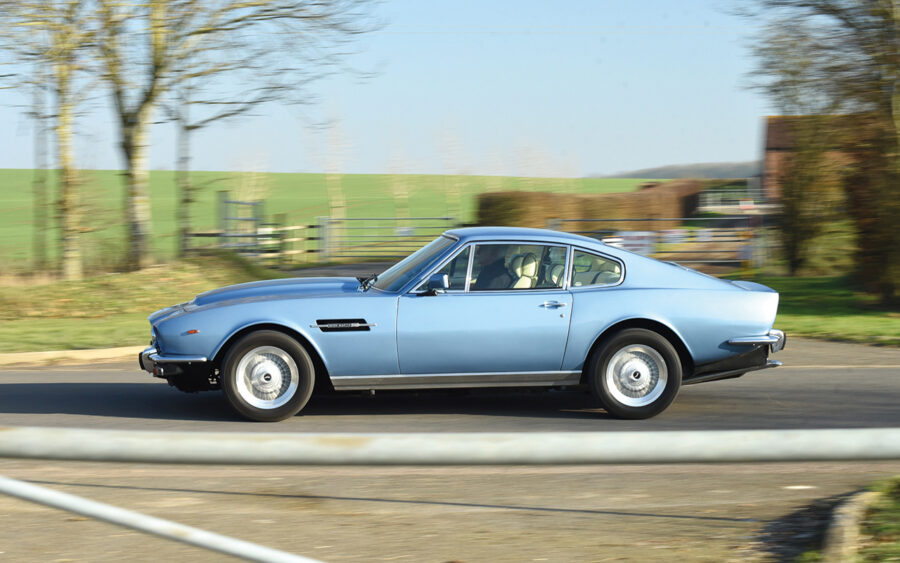
Grip is good, the steering surprisingly accurate and thanks to the recently fitted Vantage-spec springs and dampers, this example rides beautifully, lacking some of the vagueness these cars can suffer from. But I’m always aware of the its weight – a relatively chunky 1,802kg (3,969lb) – especially through corners or braking meaning it lacks the confidence of more driver-focused GTs of the time including the Porsche 928 and Ferrari 400i.
Yet it’s still a relaxed and comfortable drive, aided in no small part by the cosseting nature of the interior. Only the engine’s growl and forceful acceleration stops me from believing I’m in the living room of my late grandparents.
Although a mere 291 AMV8 Oscar Indias were produced, it still set the standard for later models. In terms of materials and ambiance, the 1990 Virage I’ve driven previously featured a very similar interior to this 1984 car, while veneer remains an option on the DB11, albeit in much smaller quantities.
Oscar India might sound like a hard-to-crack codename but there can be little confusion over the positive impact the car would have on Aston Martin’s immediate future.

